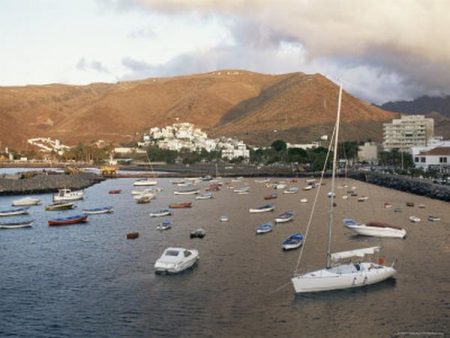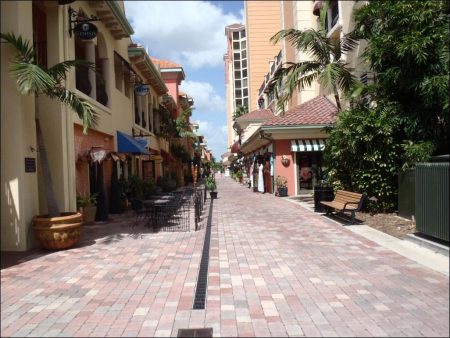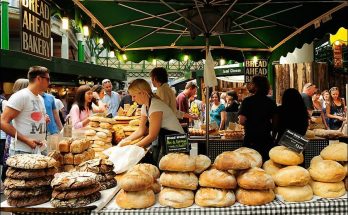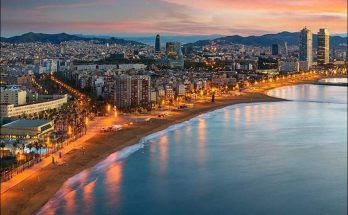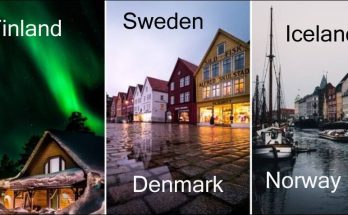As though it were caught floating halfway away from the Iberian peninsula of Europe towards South America and became lodged off the coast of western Africa, La Palma has something of each continent in its soul. The steepest island in the world at only 16 miles wide and 8000 feet high, La Palma also has enormous ecological diversity and a historic significance dating to 1492.
That was the year that the first Spaniard, Alfonso Fernández de Lugo, landed on La Palma. The island soon became a stopping ground for crews heading west to the New World. For Columbus it was a necessary stop-over for rest and supplies. The capital Santa Cruz grew to become one of the three most important ports in the Hispanic world. It also saw the departure of thousands of immigrants to South America, such as Cuba where the islanders set up tobacco plantations.
When we visited Santa Cruz we found a pleasant and relaxed city. It’s tidy and tiny with old colonial buildings. There are white churches accented with dark volcanic stone and quaint houses decorated with colorful wooden balconies. There’s a replica of Columbus’ ship the Santa Maria at the end of the Plaza de la Alameda, a delightful square shaded with old laurel trees.
It’s the island’s laurel trees that today make up Los Tilos, a protected biospheric reserve north of Santa Cruz. The name, Los Tilos, is derived from the Spanish word for smelly, since laurels stink when felled.
We joined a guided trek through Los Tilos and were astonished by the diversity of its greenery. Our guide Ilonka from Natour-Trekking explained that there are more than 2000 forms of vegetation and 70 plants unique to La Palma. The hills are a tapestry of fig trees, orange trees, palm trees, banana crops, vineyards, pines, laurels and dragon trees, a tree found only on the islands of the middle Atlantic and which can grow to be centuries old.
“Banana’s are boozers,” explains Ilonka as we stop at a banana orchard in San Andres y Sauces, another colonial village with cobbled streets and narrow alleys. “One kilo of bananas needs 1000 litres of water.” So avocados, which are much less demanding of the island’s water supplies, are slowly replacing banana farming.
For now the island is covered by huge patches of banana land, with the gigantic leaves swaying in the wind. Some of the fields are covered in plastic to prevent the heavy leaves from bruising the bananas, but as a local restaurateur tells us, bananas cultivated in this way are less tasty.
And taste, it turns out, is a specialty here. We encountered our tastiest treats during our hikes on the western side of the island, known as the sunnier side. As we approached a small almond farm the farmer’s wife appeared with satchels of roasted, sugared almonds for us to buy. At Tazacorte, a genteel village with bright, arty street furniture, we drank sugar cane juice pressed through an old-fashioned hand-mill. It gave us that extra kick needed to climb the cliff for a panoramic view.
The goats we saw roaming the northwestern hills produced the best delight of all: goat cheese roasted over pine-brush and topped with a typical Canary Islands sauce called mojo verde. The crushed coriander and garlic sauce combines tantalizingly with the smoky flavour. La Palma’s goat cheese is so fine because of the very diversity of greens the goats can freely graze.
These pampered goats also have spectacular views of the island’s most majestic feature, the Caldera de Tarubiente. This snowy peak is an extinct 5-mile wide crater and the climax of the volcano trail that runs along the north-south spine of the island. The western winds cause clouds to pour over this ridge like milk spilling in slow motion. From here you can also see the tips of the other Canary islands Tenerife and La Gomera.
After all the trekking and fantastic sea views, we were ready for a day at the beach. At Los Cancajos, near Santa Cruz, the sand is very black from the volcanic explosions that formed the island. The lava-rich soil is also the reason for La Palma’s quality wine. With a bottle of malvasia—the wine that was once noted by Shakespeare—and anise-seeded bread, we enjoyed the view of Santa Cruz’s miniature skyline from the warm beach.
Very few ships still dock at Santa Cruz. There are ferries from the Spanish mainland and some afternoon day-trippers from the other Canary islands. All this means that it’s a pretty peaceful place. It‘s the rich history, food and colors—from the black sand beaches to its white peaks and the green in between—that gives La Palma its unique flair.
Visits: 91
